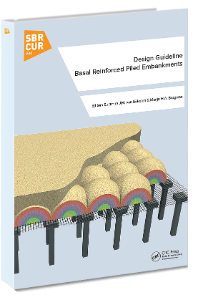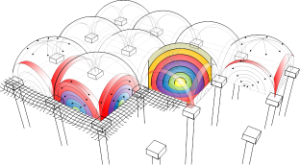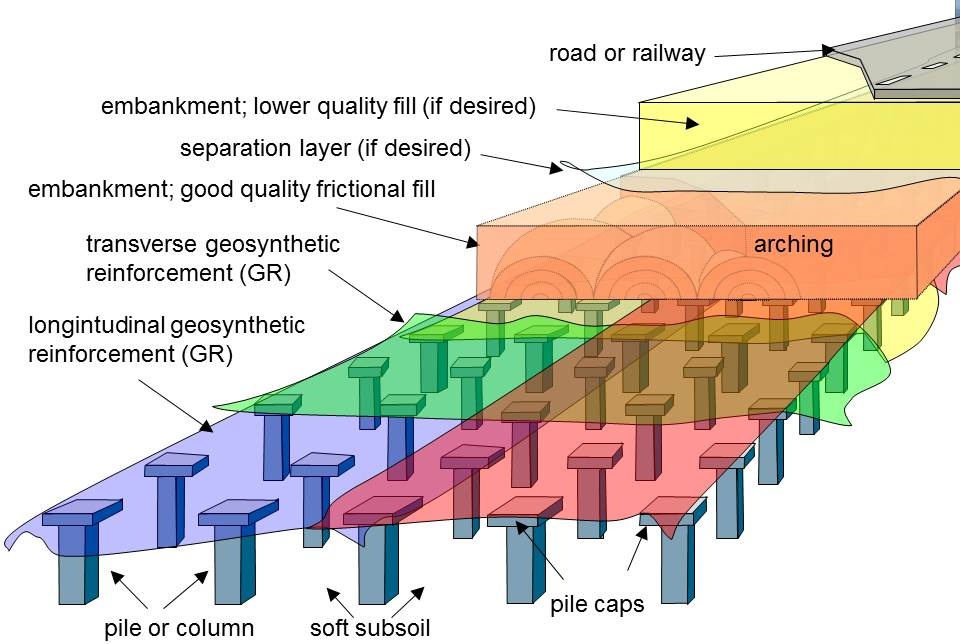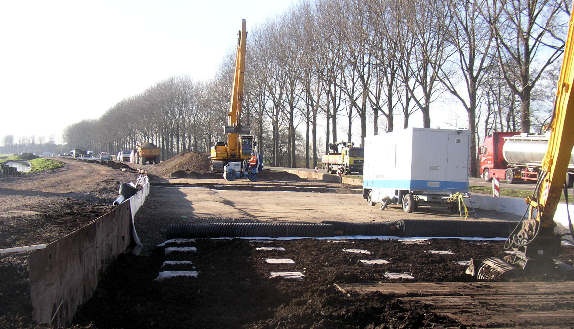Agenda for Piled Embankment - Related Activities by Deltares and Partners
16:15: Three paper presentations at ECSMGE24 in Lisbon, Portugal:
- 3D small-scale tests on steel-reinforced piled embankments (paper 80); Suzanne J.M. van Eekelen, M. Schneider, B. Wittekoek, M. Hell, P. Pandrea, P. Schauber, M. Topolnicki, K. Makowska, K. Zdanowicz, R. Sieńko, H. Zachert
- Large-scale test on basal steel-reinforced piled embankments (paper 406); Marc Schneider, M. Hell, P. Pandrea, B. Wittekoek, S.J.M. van Eekelen, M. Topolnicki, K. Makowska, R. Sieńko, H. Zachert
- Groundwater in geosynthetics-reinforced pile-supported embankments, 3D Experiments (Paper 81); Suzanne J.M. van Eekelen, B. Wittekoek, R.A. Zwaan, A. Bezuijen, A. Nancey
9:00-10:00: State-of-the-Art Lecture by Suzanne van Eekelen at ECSMGE24: Basal-reinforced pile-supported embankments, dealing with risks and safety (paper 1074, co-authors Piet G. van Duijnen and Timo Schweckendiek)
Invited lecture to be announced later, in-person and online
to ECPMG 2024 in Delft, Netherlands: Several lectures on physical modelling research on piled embankments
to Two-day course on basal-reinforced pile-supported embankments in Delft, Netherlands, organized by PAO Techniek and Management
to ACPMG 2024 in Abu Dhabi, United Arab Emirates: A themed lecture on physical modelling of basal-reinforced pile-supported embankments (Paper 3)
More than 20 years of research on piled embankments at Deltares
Deltares has been conducting research on pile embankments for over 20 years. You can find our papers at Google Scholar or the Deltares knowledge platform.
The results significantly contributed to the development of the Concentric Arches (CA) model, which was adopted in the Design Guideline Basal Reinforced Piled Embankments.
Currently, Deltares is involved in research on for example:
- Piled Embankments with Basal Steel Reinforcement (PEBSTER), with partners TU Darmstadt, Institute of Geotechnics, Keller, and SHM Systems. PEBSTER is a GEOLAB transnational project and a TKI project.
- Currently, we are working on a new research project with a large test set-up and a simulation of train passages. Interested to join our research consortium? Contact us. We expect a financial contribution.
- Groundwater in geotextile embankments, with partner Solmax-TenCate. This is a TKI project, funded by a TKI-PPS funding of the Dutch Ministry of Economic Affairs.
Design Guideline Basal Reinforced Piled Embankments
The Design Guideline Basal Reinforced Piled Embankments can be purchased at Taylor&Francis Group/CRCPress or Amazon.
This paper provides a summary and this free and open Excel file contains the main equations. The guideline:
- Offers the most reliable and comprehensive guideline available for the design of basal reinforced piled embankments
- Features the most up-to-date insights in the behaviour of basal reinforced piled embankments, including the Concentric Arches model
- Includes extensive calculation examples
- Provides construction details and many practical tips
Prof. Richard Bathurst has written a review of our design guideline, which you can for free on the Geosynthetics International website.
Doctorate study Basal Reinforced Piled Embankments
Suzanne van Eekelen received her PhD on basal reinforced piled embankments on 1 July 2015.
- Her PhD thesis: S.J.M. van Eekelen, Basal Reinforced Piled Embankments (ISBN 978-94-6203-825-7). If you are interested in a paperback version, please click here.
- Suzanne van Eekelen developed a design method for the geosynthetic reinforcement in the piled embankment. This model is available in excel: excel file with Concentric Arches model.
For the doctorate, the Deltares laboratory conducted a series of experiments, reported in Van Eekelen et al., 2012a. Based on this, Van Eekelen developed the new Concentric Arches design model for the basal reinforcement of the piled embankment (Van Eekelen et al., 2012b, Van Eekelen et al., 2013). This model was validated with measurements from seven full-scale projects and four series of scaled model experiments (Van Eekelen et al., 2015). The calculated results closely match the measured results. Suzanne van Eekelen received several awards for her work on basal-reinforced piled embankments.
The Concentric Arches model. The loads are transported along the hemispheres and the 2D arches, towards the piles, the geosynthetic reinforcement and the subsoil. This model is available in excel: excel file with Concentric Arches model.
The results of the doctorate study were adopted in the 2016 update of the CUR226 Dutch Design Guideline for Basal Reinforced Piled Embankments.
What is a piled embankment?
A piled embankment consists of a foundation on piles, with on top of that an embankment. The bottom section of the embankment is composed of a granular material and reinforced with one or more geosynthetic layers. The embankment can be raised with sand or granular material. The piled embankment is finished with a road or a railroad construction.
Within the granular layer, the load is transferred towards the stiffer, less-moving elements. As a result, the load follows paths that are more or less arch-shaped. This phenomenon is called soil arching.
Why are piled embankments applied?
A basal-reinforced pile-supported embankment can be used for the construction of a road, railway or an industrial area when a traditional construction method would require too much construction time, affect vulnerable objects nearby or give too much residual settlement, making frequent maintenance necessary.
The Dutch version of Piled Embankments: Paalmatrassen.





